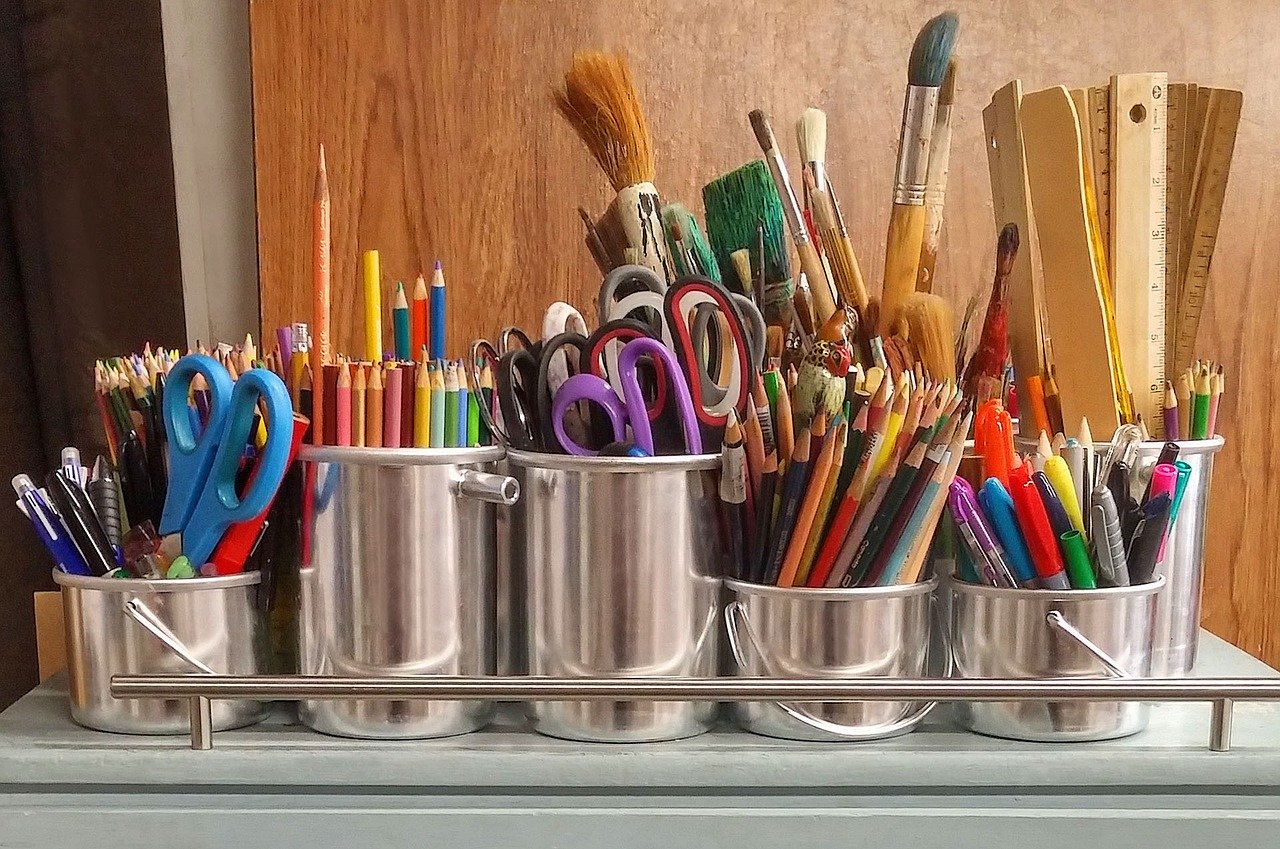March 16, 2020 | Andrea Davis, ATR-BC, LPC-AT-S
As we navigate the current coronavirus pandemic, it is a good time to be mindful about art supplies and ways to prevent the spread of illness. The Center for Disease Control (CDC) describes COVID-19 as an airborne illness. Droplets in the air can be breathed in and also land on surfaces including work spaces and art supplies. Protecting clients from harm includes having clean art supplies.
In order to maintain the cleanliness of the art studio or art-making space, it can be helpful to get into good habits for pre-session prep and post-session cleanup. While your facility may have more specific protocols‒and it is recommended that you check what those are‒there are some basic guidelines that can be adapted from medical spaces. This includes performing proper hand washing techniques upon entering and exiting the room, wearing gloves if there is potential for contact, and wiping down any surfaces in a consistent manner.
Keeping art supplies free from contamination is just as important as hand washing. Like hand washing, art supplies must be cleaned in between use from one client to the next. For best practices, the CDC details proper cleaning methods here. Using consumable, or single use, art materials is a great way to lower risk of transmission of germs.
Examples of art materials that can be used one time and kept by the client, or thrown away:
Textiles Canvas Single-use packaged clay
Paper Cotton swabs Paint
Craft sticks Chenille stems Yarn
Example of supplies that can be used repeatedly but must be disinfected:
Markers Scissors Colored pencils
Paintbrushes Needles Knitting/ crochet tools
It may be difficult to find time to disinfect supplies between sessions. One way to utilize supplies during a busy work day, without having to immediately disinfect between art therapy sessions, is to organize supplies. For example, have a “clean supplies” section in your work space, and a “dirty supplies” section. After using some supplies during a session, place them in the “dirty supplies” section so they will not be used again until they can be disinfected. This is a simple and practical way to save time while also maintaining client safety.
One infection prevention protocol used in the hospital setting is to stock Ziploc bags with art supplies for each patient on the rounds for the day. This way everyone knows that the bags contain clean materials. Once they are used, they go into the used bin to be sanitized for the next day. This also offers patients a visual indication that their materials are sanitized and have not been used by anyone else. For in-patient populations, some art therapists give patients single-use kits, which they can keep them in their room and take them home when they leave the hospital.
Art therapists should also be conscientious of any art supplies or art pieces that are traveling in and out of the art studio or space. For example, art pieces can be kept in the room but if the client takes it with them, it should not be returned to the room. If working from an art cart, consider only taking in what you need for the session and leaving the rest outside.
Limiting art supplies, for the next few weeks, to those that are easy to clean and/or single-use is an easy way to protect clients and ourselves. Having a cleaning protocol in your work space, year round, is recommended and now is a good time to implement a strategy if you have not done so before. With these steps, we can all do our part to create safe, healing spaces for our clients.
Andrea Davis, ATR-BC, LPC-AT-S
 Andrea Davis is founder of Dallas Art Therapy, a non- profit offering affordable and free art therapy services for the community. She works in private practice and as supervisor for art therapy/licensed professional counseling interns and has 14 years of clinical experience treating trauma. Davis is a past two-term president of the North Texas Art Therapy Association. Davis currently serves as Honors chairperson for the American Art Therapy Association and also for the Exam Development and Standard Setting Committee with the Art Therapy Credentials Board.
Andrea Davis is founder of Dallas Art Therapy, a non- profit offering affordable and free art therapy services for the community. She works in private practice and as supervisor for art therapy/licensed professional counseling interns and has 14 years of clinical experience treating trauma. Davis is a past two-term president of the North Texas Art Therapy Association. Davis currently serves as Honors chairperson for the American Art Therapy Association and also for the Exam Development and Standard Setting Committee with the Art Therapy Credentials Board.
Davis recently completed two murals, one for the Cidma Museum in Corleone, Sicily and the other a community mural at Goldmark Community Center in Dallas, sponsored by the Dallas Office of Cultural Affairs. Her chapter, “Professional and Ethical use of Expressive Arts”, is included in the book, Ethical and Legal Issues in Counseling Children and Adolescents (2017 Routledge). Davis recently completed a chapter on art supplies and infection control for a forthcoming book on Medical Art Therapy, Jessica Kingsley Publishers (2021).
A special thanks goes to Paige Asawa, PhD, MA, LMFT, ATR-BC, who also contributed content to this article.

